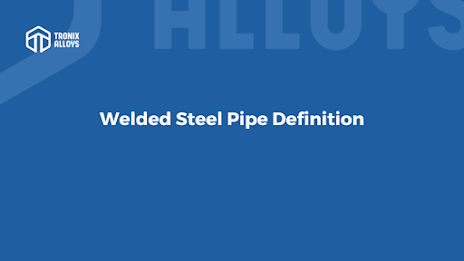Top 10 316 Stainless Steel Pipe Applications
In the austenitic stainless steel grade, this pipe has a good
range of corrosion resistance from chloride ions, as well as a good level of
stress cracking resistance due to its austenitic nature. This means that the
pipe can be used in marine applications and in seawater environments without
any problems as a result of its properties. Pipes can be welded, seamless or
electric fusion welded, and there are a wide variety of types of pipes
available in the market. A 316 Stainless Steel Seamless Pipe, and 316 Stainless
Steel Welded Pipe ranges in outer diameter between 12 inches and 16 inches,
while welded pipes range up to 24 inches and electric fusion welded pipes range
up to 100 inches in diameter. There is no difference between the strength of
the 316 Welded Pipe and the 304 Welded Pipe since both types of pipes are made
from strips of the same grade. In spite of this, because the pipe contains 4%
molybdenum, it has an enhanced corrosion resistance. It is a member of the A312
specification for tubular products, and it can be used for applications
requiring high temperatures and pressures. Pollution control, waste water
purification, sea water desalination, and marine applications are the most
common uses of stainless steel pipes.and marine applications.
In comparison to stainless steel alloy 304, stainless steel
316 pipe sizes offers much better mechanical properties as well as corrosion
resistance as compared to stainless steel alloy 304 pipe. As a result,
stainless steel 316 pipe is often used in many applications when the properties
of the alloy 304 pipe are not sufficient to satisfy the requirements of the
application due to the properties of stainless steel 316 pipe. Consider, for
instance, the textile industry as an example. Synthetic textiles are made from
synthetic materials, while natural textiles are made from natural materials.
Accordingly, they are treated differently based on the type of fibre they are
composed of and therefore, are processed in a different way. The fibres of
cotton or linen are usually scoured and bleached in order to remove any
impurities that might have been present in them before they are made into
fabric.
There are a number of types of salts, soaps, or chemical
solutions that are used in these processes, and if exposed to grade 304, it is
certain that they would be prone to corrosion because they interact with the
metal. Due to this, seamless pipes are a wonderful addition to the textile
industry since they have an amazing tensile strength and highly resilient
behavior, making this alloy grade an incredible addition to the textile
industry. Depending on the type of fabric, textile fibres can also be dyed in a
number of different ways and using a variety of chemicals, depending on the
technique or chemical used. When using fibres such as nylon or silk, acids such
as acetic acid are used in order to increase the rate at which dye is absorbed
by the fabric, thereby facilitating the increase in colour fidelity of the
fabric.
For more information visit
https://tronixalloys.com/top-10-316-stainless-steel-pipe-applications/
#tronixalloys #tronix #metal #steel #iron #supplier
#manufacturer #grade304




Comments
Post a Comment